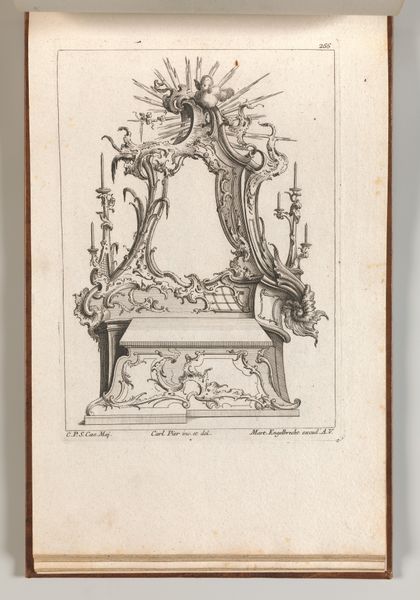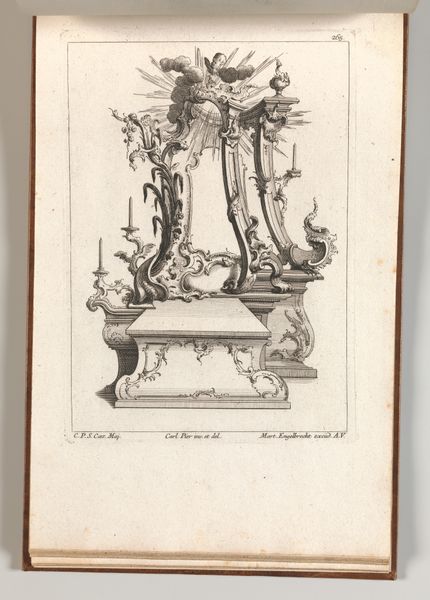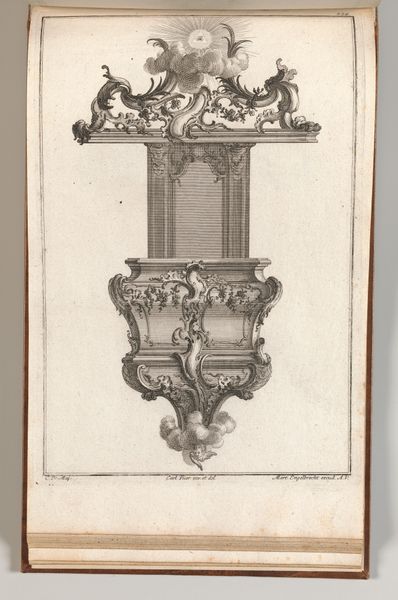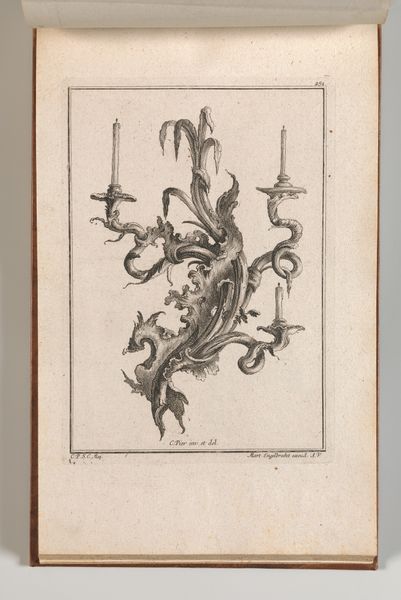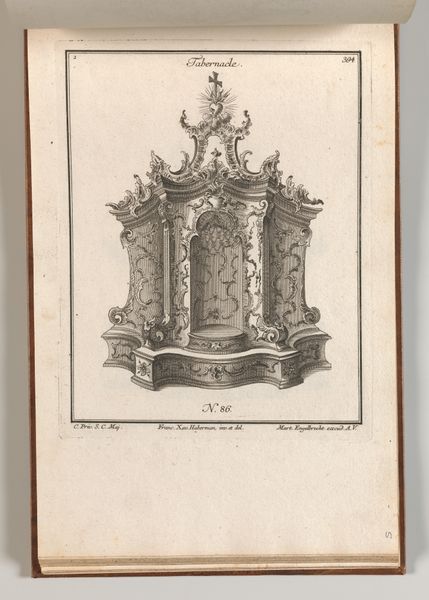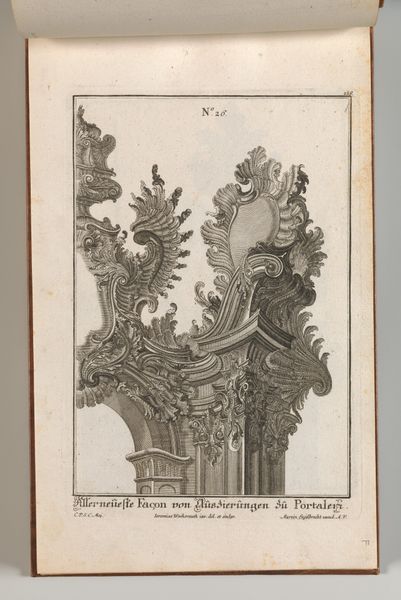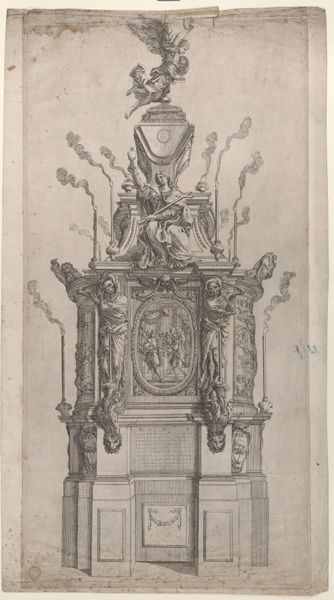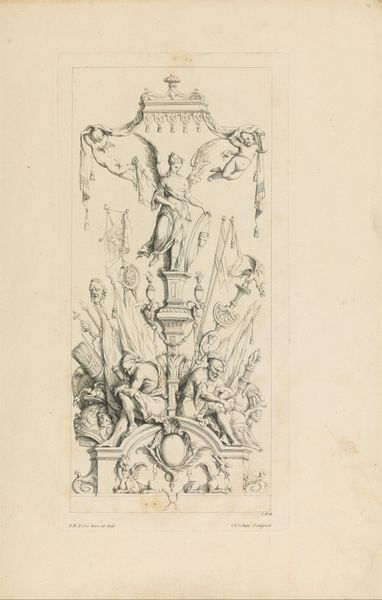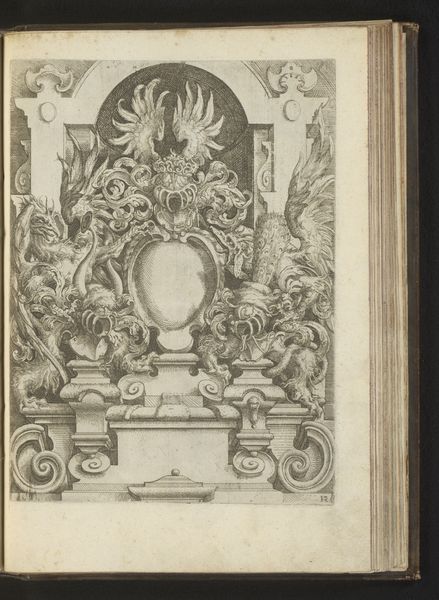
Design for an Altar, Plate 4 from an Untitled Series of Designs for Altars 1745 - 1755
0:00
0:00
drawing, print
#
drawing
#
baroque
# print
Dimensions: Overall: 8 7/16 × 13 3/4 in. (21.5 × 35 cm)
Copyright: Public Domain
Editor: So, this is “Design for an Altar, Plate 4 from an Untitled Series of Designs for Altars,” made sometime between 1745 and 1755 by Jacob Gottlieb Thelot. It’s a drawing, or rather a print, rendered in that elaborate Baroque style. Looking at all that intricate ornamentation, what exactly *were* altars made of at this time? Curator: More than materials, I’m drawn to the processes at play. Think about the labor embedded in a print like this: the artist's design, the engraver's meticulous work translating that design onto a plate, and the printer who produced multiple copies. Each stage requires specific skills, contributing to the final object’s meaning as much as its aesthetic qualities. How would this division of labor have impacted the construction of actual altars at this time? Editor: That's an interesting point. I was so focused on the ornate details I hadn’t really considered all the steps involved. Does the print medium suggest anything about how these altar designs were disseminated, perhaps reaching a broader audience of craftsmen? Curator: Exactly! This print offered a model, democratizing artistic ideas and allowing for mass production, or at least wider access to design. And this raises crucial questions about artistic agency in that era: was Thelot trying to dictate the aesthetics of devotion? Were local artisans influenced and able to apply their own expertise and local resources into altar construction? These objects are born of social and material forces, reflecting complex interactions between artist, patron, artisan, and consumer. Editor: That is insightful! Now, when I see it, I’m seeing a whole network of people involved in bringing the concept of an altar to life! I appreciate knowing more about not only materials but all of the methods, tools, and collaborative labor of production.
Comments
No comments
Be the first to comment and join the conversation on the ultimate creative platform.
